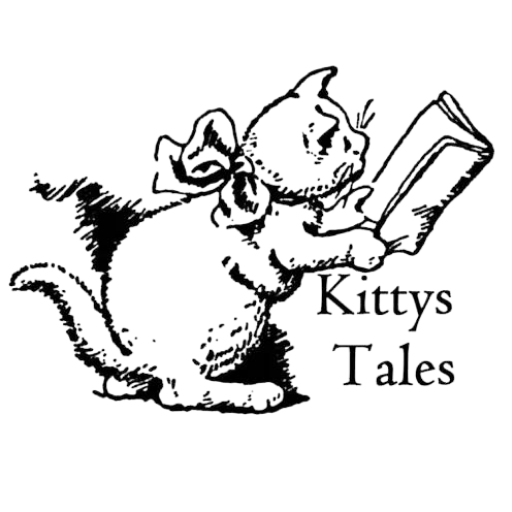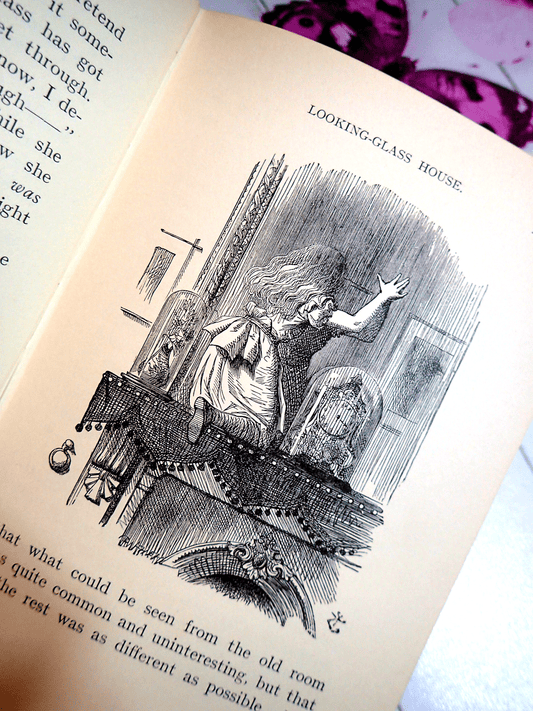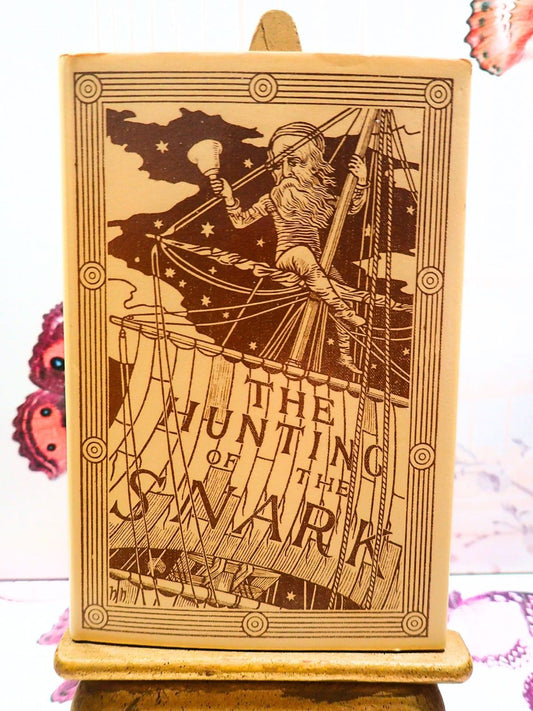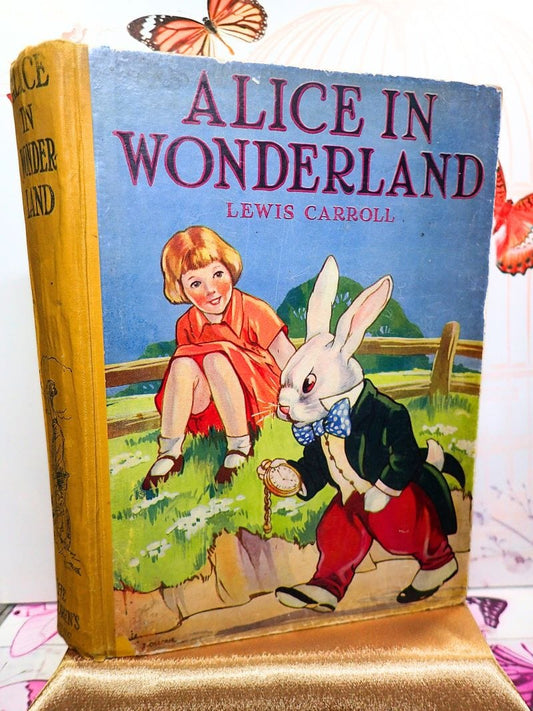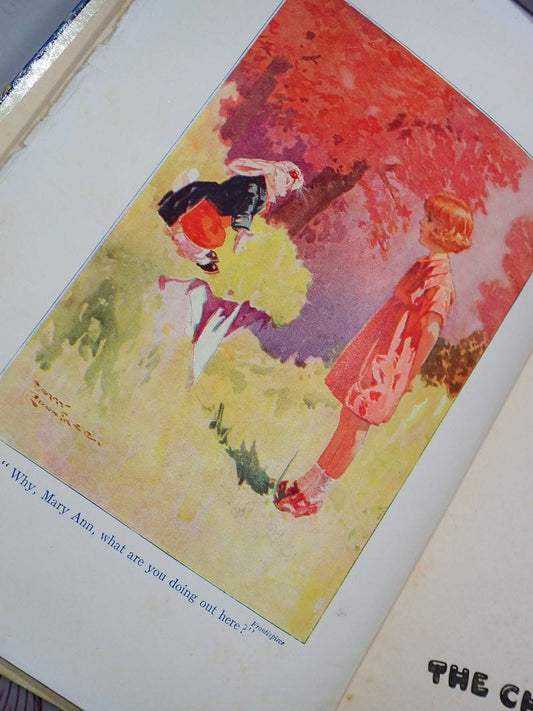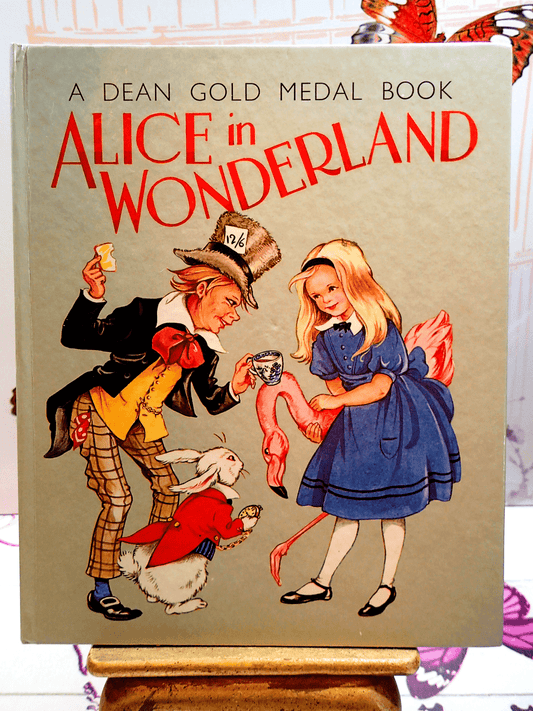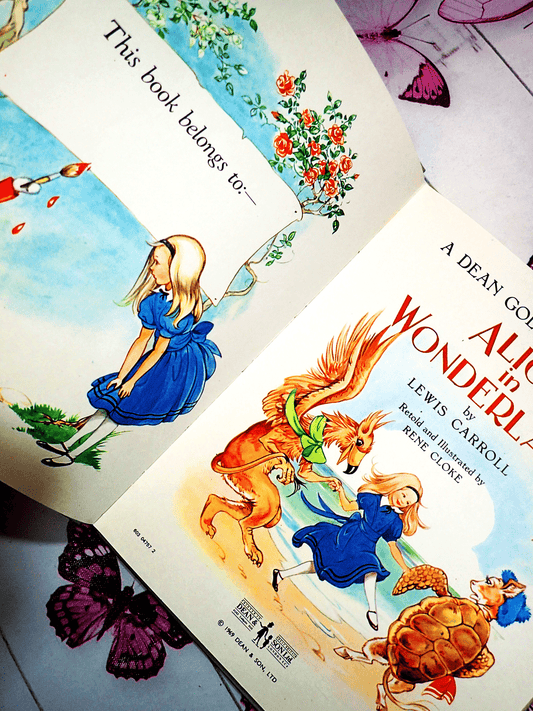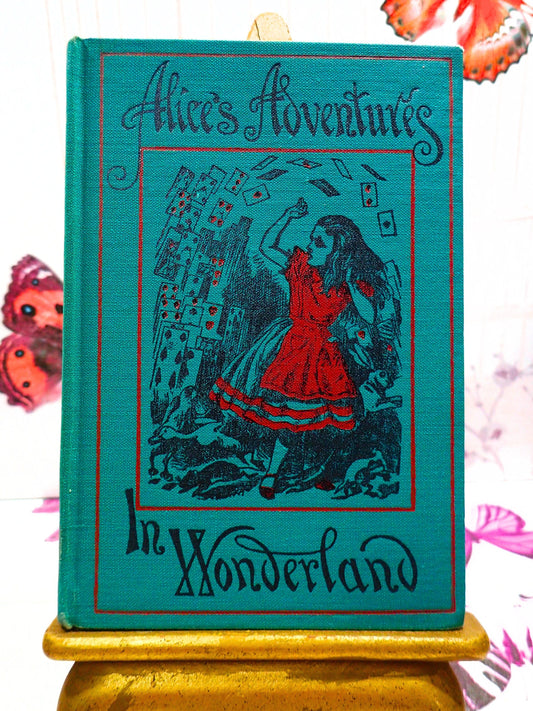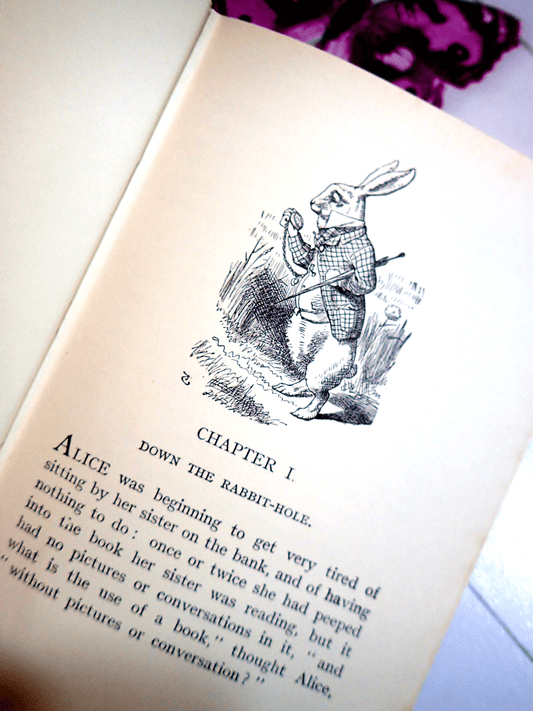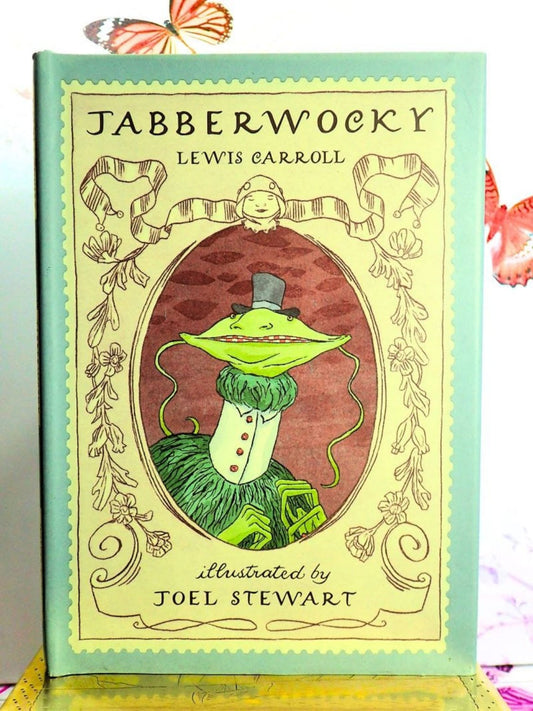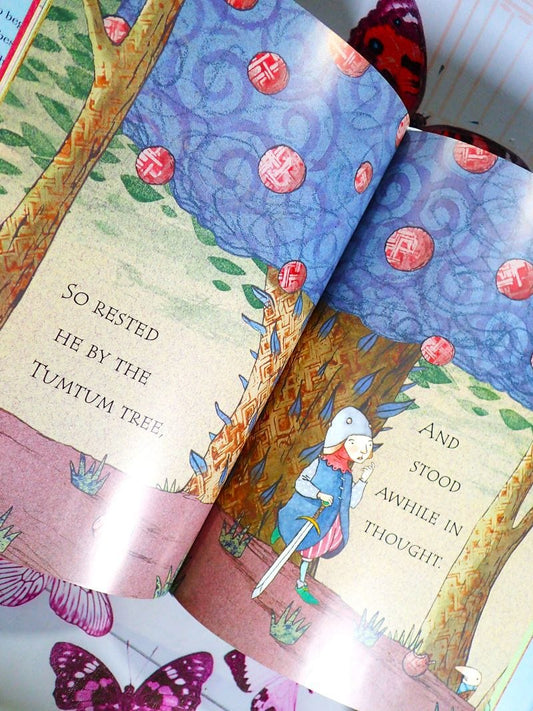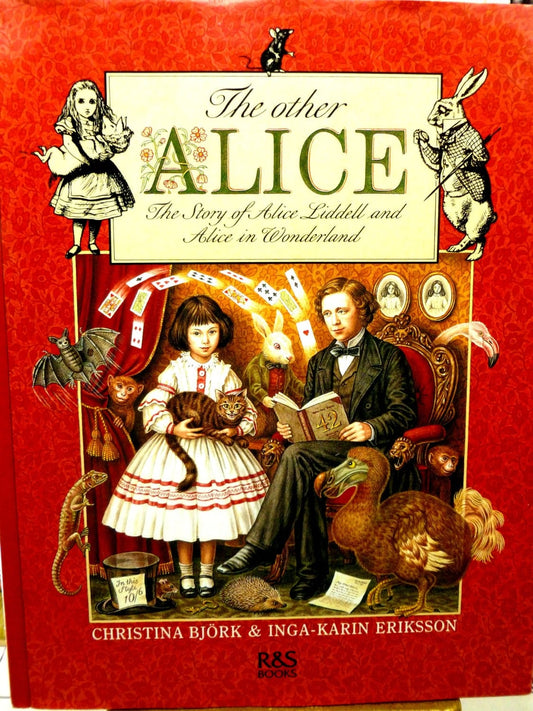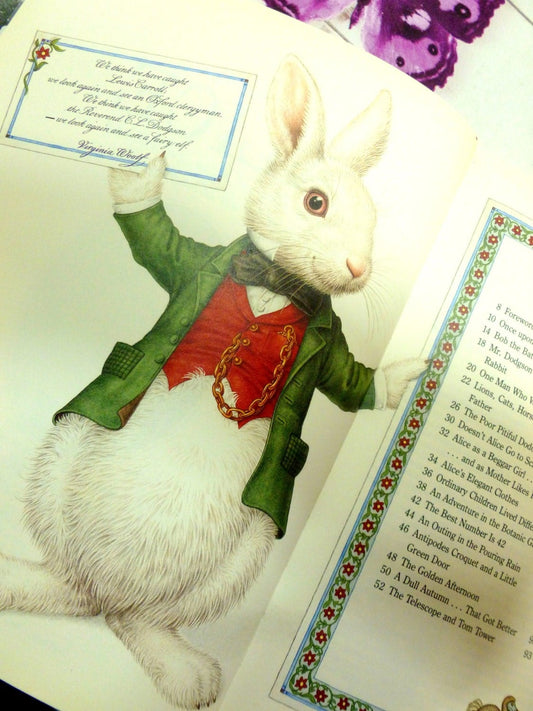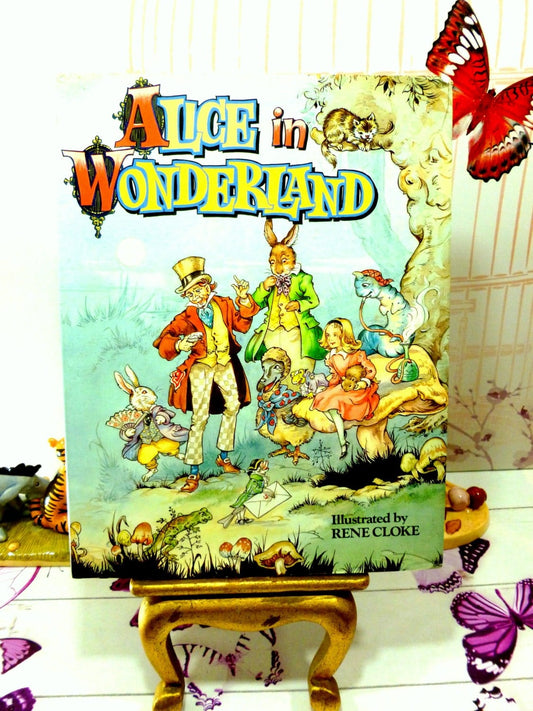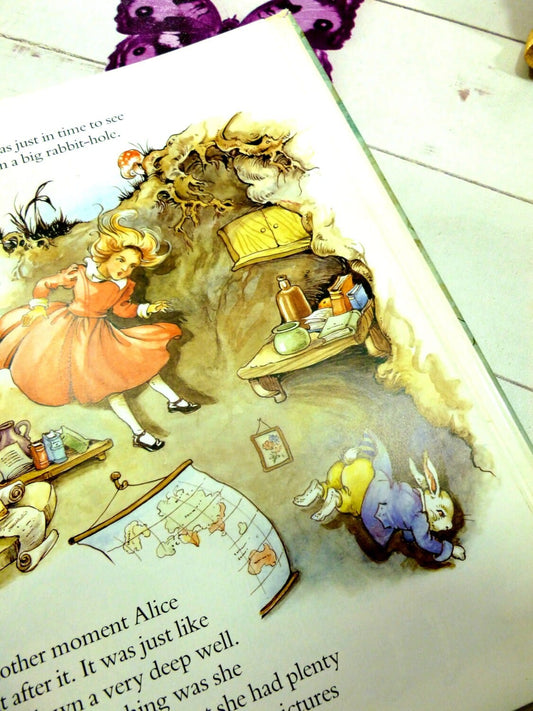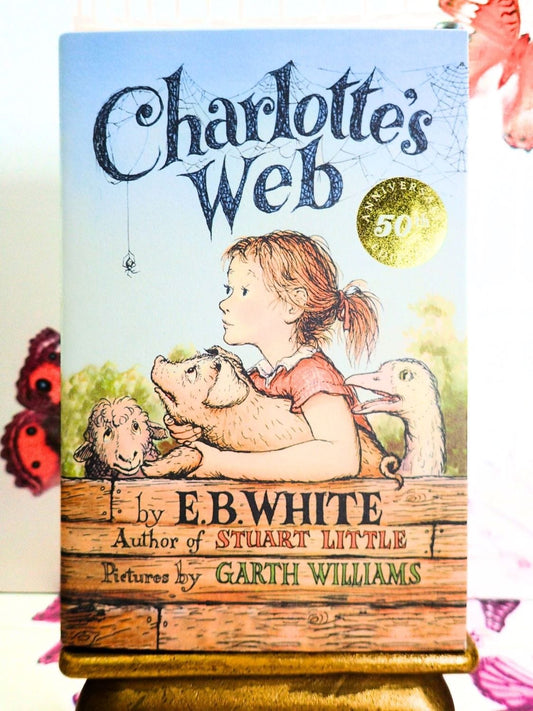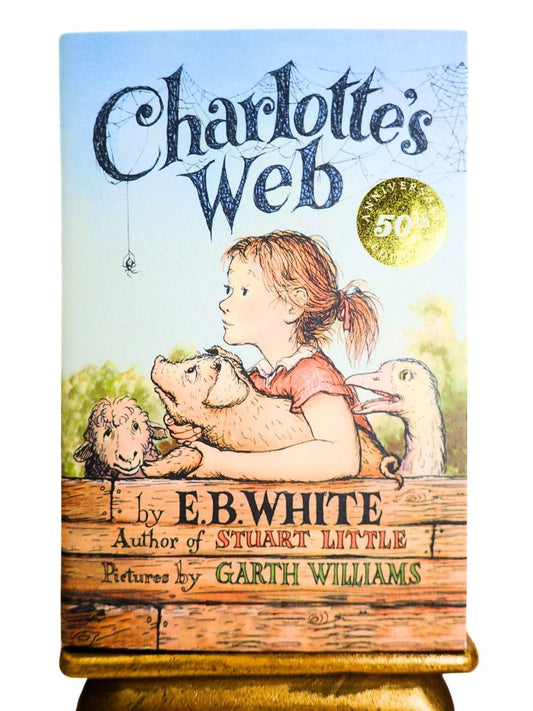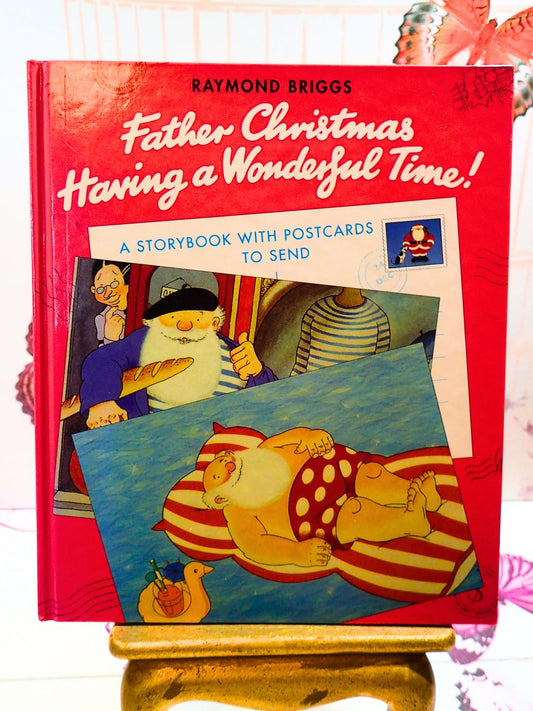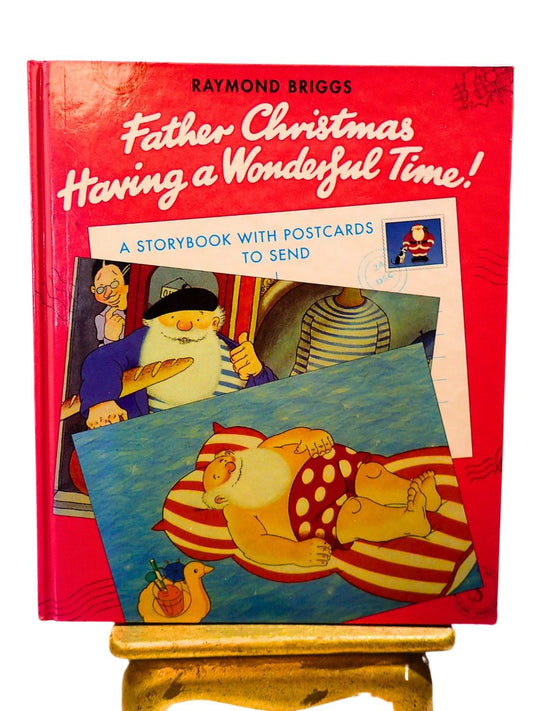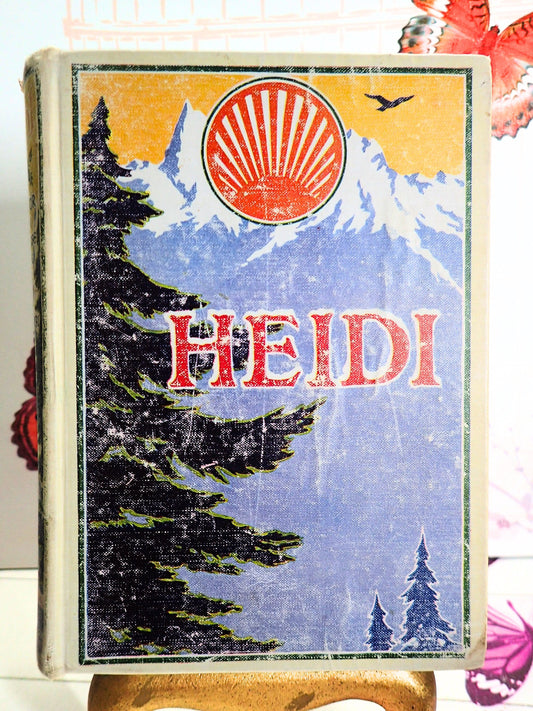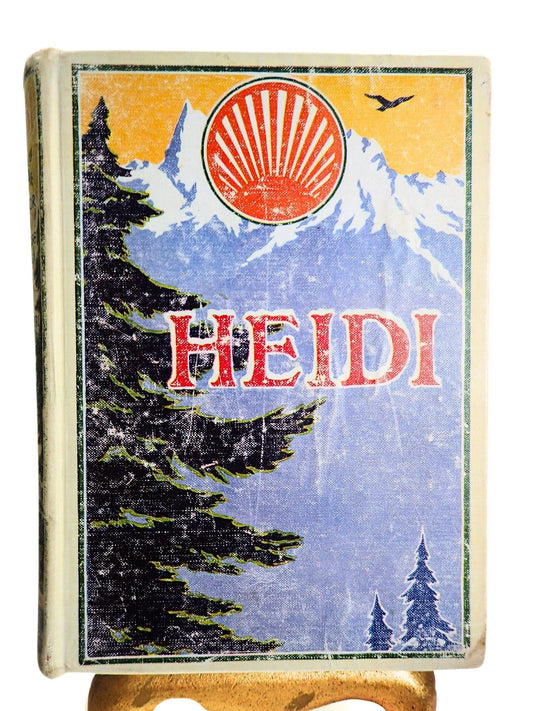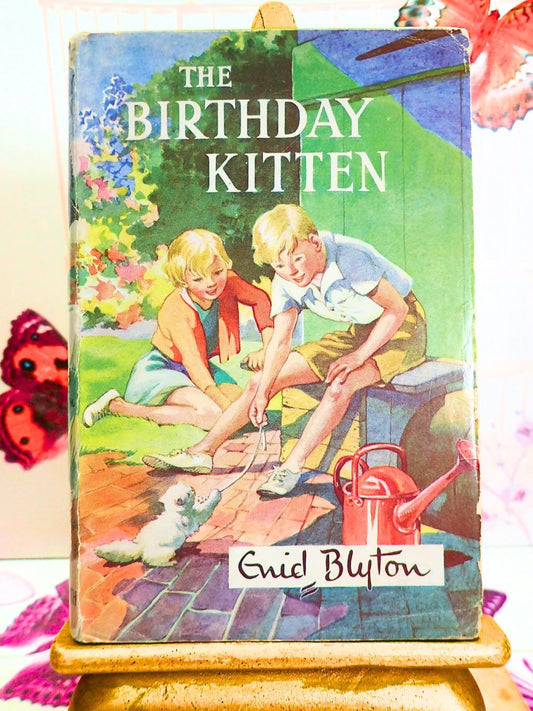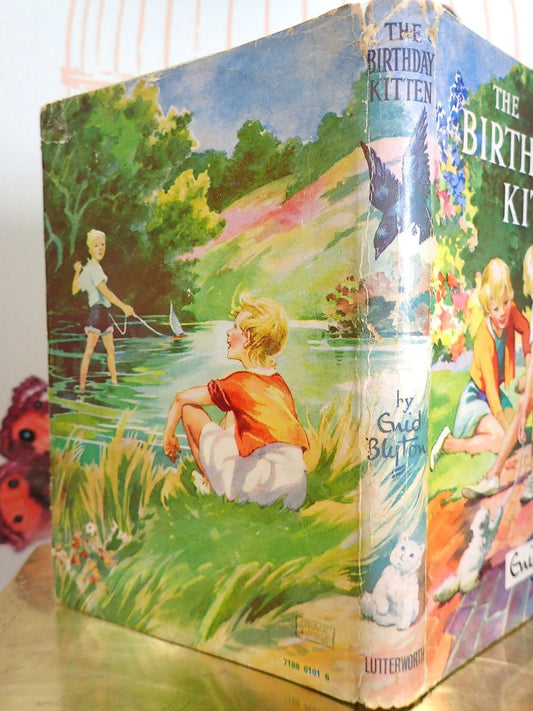Lewis Carroll and Alice in Wonderland
-
Just like Alice in Wonderland follow the White Rabbit and shop our favourite antique and vintage Lewis Carroll books. Between the pages of our old children's books the Jabberwocky awaits and you can step right through The Looking Glass to a world of wonder.
Or read about the life of this best-loved author of the eternally loved little girl "Alice" and her perpetually late friend, "the White Rabbit".
Delight children or adults alike with a beautifully illustrated edition of this classic children's fantasy novel or find the other wonderful antique Lewis Carroll books and editions we have for sale. -
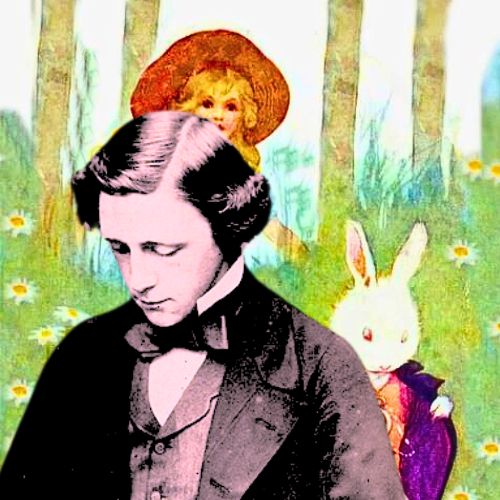
-
Through the Looking Glass Lewis Carroll Vintage Children's Book about Alice Macmillan
Vendor:Kittys TalesRegular price $36.00 USDRegular priceUnit price / per -
The Hunting of the Snark Lewis Carroll Poem Classic Old Vintage Book Edition
Vendor:Kittys TalesRegular price $28.00 USDRegular priceUnit price / per -
1920's Alice in Wonderland Lewis Carroll Antique Children's Book Harry Rountree
Vendor:Kittys TalesRegular price $66.00 USDRegular priceUnit price / per -
Alice in Wonderland Dean Gold Medal Vintage Children's Book Lewis Carroll Classic 1960's
Vendor:Kittys TalesRegular price $66.00 USDRegular priceUnit price / per -
Alice's Adventures in Wonderland Lewis Carroll Vintage Children's Book Hardback Macmillan
Vendor:Kittys TalesRegular price $39.00 USDRegular priceUnit price / per -
Jabberwocky by Lewis Carroll Vintage Children's Book Joel Stewart First Edition
Vendor:Kittys TalesRegular price $21.00 USDRegular priceUnit price / per -
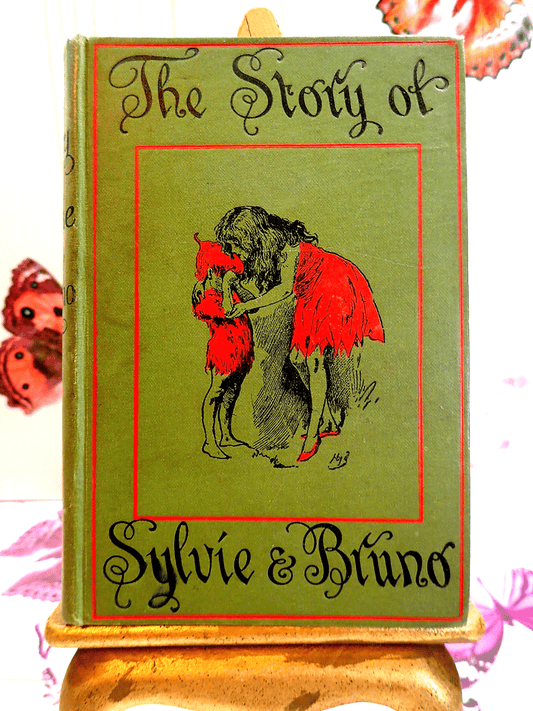
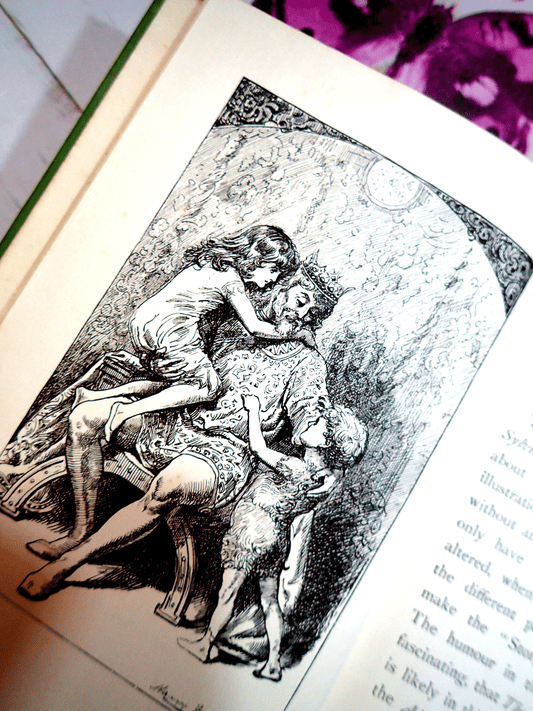
The Story of Sylvie and Bruno Lewis Carroll Vintage Children's Book Macmillan 1920's Antique
Vendor:Kittys TalesRegular price $33.00 USDRegular priceUnit price / per -
The Other Alice in Wonderland The True Story of Alice Liddell First Edition Vintage book
Vendor:Kittys TalesRegular price $17.00 USDRegular priceUnit price / per -
Vintage Book Alice In Wonderland Beautifully Illustrated by Rene Cloke Collectible Hardback
Vendor:Kittys TalesRegular price $21.00 USDRegular priceUnit price / per

Christ Church, Oxford March 1, 1885
"My Dear Mrs Hargreaves, I fancy this will come to you almost like a voice from the dead, after so many years of silence --and yet those years have made no difference, that I can perceive in my mind clearness of memory of the days when we did correspond..."Letter to Alice Hargreaves (née Liddell) from Charles Dodgson, saved by Alice for the rest of her life.
On July 4th, 1862, a shy young gentleman called Charles Lutwidge Dodgson took his neighbour Alice Liddell on a picnic. On this day one of our most greatly beloved classic children’s books was born.
To amuse his little friend Alice, Charles decided to tell her a story.
This story later became known as "Alice’s Adventures in Wonderland".
Eventually the story was published and the rest of the world was able to enjoy forever this timeless tale about the little girl Alice and her amazing adventures in a fantastical world.
That this superb old children’s book should come from the imagination of an outwardly staid and socially awkward young mathematical lecturer, at Christ Church Oxford, was astounding in itself.
Dodgson was born in Cheshire in 1832...
Collapsible content
Read More
He was an awkward, shy and slightly odd child with a stutter (Wolf, 2010). He amused himself by making pets of strange animals and letting his fervent imagination run wild whilst he created diverse amusements for himself (Richardson, 1963).
He was precociously intelligent, begging his father to explain the meaning of Logarithms at an early age. His burgeoning mathematical talent led him to his career in Oxford, where he had matriculated; gaining a first class honours in Mathematics and a second class honours in Classics.
At the time of Dodgson’s career in Oxford, Christ Church Dons by necessity, had to be unmarried. Eventually he was ordained as Deacon in 1861. He remained unmarried all his life (Bakewell, 1996).
After the publication of Alice’s Adventures in Wonderland’" (published under the Pseudonym ‘Lewis Carroll’), Dodgson’s literary career took off gaining him great fame and some notoriety.
In a conversation with a young mother in a railway carriage he was amused to find out she believed through popular rumour, that he had gone 'quite mad' (Bjork & Eriksson, 1993).
Dodgson later sent the girl's mother a copy of "Alice in Wonderland'" thanking her for a pleasant conversation; an act that must have caused some great consternation once the woman realised whom she had actually been talking to!
Dodgson lived rather an odd bachelor life and was known for his slightly bizarre sense of humour coupled with his eccentrically intense love of photography (Waggoner, 2020).
In later years his passion for photographing children led to some speculation about his nature and relationships; especially those with his numerous circle of ‘child-friends’.
Alice Liddell (later Mrs. Alice Hargreaves), the little girl he had the most important intimate friendship with - kept stoically and determinedly silent all her life about her relationship with Dodgson.
When Alice died it was discovered she had cherished the last letter Dodgson ever wrote to her. Although all her previous letters from him were purposefully destroyed by her family when she was a young girl (Cohen, 1996).
We will never know the truth and it is worth considering that social mores around children, particularly in Art, were very, very different in the Victorian era. It was certainly not the least uncommon to see naked children in paintings, and photography at the time was understood as an alternative to the art of painting or portraiture of any kind (Waggoner, 2020).
Dodgson all his life, was an avid letter writer, artist and photographer, hence much of his work has survived (Morton, 1996) His hand-written manuscript of Alice contains Dodgson's own imagined illustrations which were actually rather good but not as good as the John Tenniel illustrations finally settled upon for his books.
He went on to write another Alice book called "Through the Looking-Glass, and what Alice found there", as well as various other literature.
Many of Dodgson’s photographs have also survived and give a fascinating insight into the early development of photography as an Art form (Waggoner, 2020). Further beyond his fame as an author he also made significant scholarly contributions to the study of Mathematics (Langford, 1932).
As for the original manuscript of "Alice’s Adventures Under Ground", this was given personally by Dodgson to Alice Liddell, as he had faithfully promised her (Winchester, 2011).
Alice much later in life sold the manuscript to Dr. Rosenbach, an American antique book dealer for £15,400 which was a record sale for a book, especially a children's book, at the time.
The manuscript's journey continued through the years, and eventually Rosenbach sold the manuscript on again, making a huge profit, to a millionaire called Eldridge Johnson (Bjork & Eriksson, 1993). The original Manuscript is now safely held at the British Library, in London.
References and Further Recommended Reading:
Bjork, C., & Eriksson, I. (1993). The other Alice. Raben & Sjogren.
Bakewell, M. (1996). Lewis Carroll: A biography. Heinemann.
Cohen, M. N. (Ed.). (1979). The letters of Lewis Carroll. Macmillan.
Richardson, J. (1963). The young Lewis Carroll. Max Parrish.
Waggoner, D. (2020). Lewis Carroll's photography and modern childhood. Princeton University Press.
Winchester, S. (2011). The Alice behind Wonderland. Oxford University Press.
Woolf, J. (2010). The mystery of Lewis Carroll: Discovering the whimsical, thoughtful, and sometimes lonely man who created "Alice in Wonderland". St. Martin's Press.
Books by this Author
"Alice’s Adventures in Wonderland" (1865)
"Phantasmagoria and Other Poems" (1869)
"Through the Looking-Glass" (1871)
"The Hunting of the Snark" (1876)
"Alice's Adventure's Underground" -facsimile (1886)
"The Nursery Alice" (1889)
"Sylvie and Bruno" (1889)
"Sylvie and Bruno Concluded" (1893)
In addition to these "classic children's books" and poetry published under the pseudonym Lewis Carroll, Charles Dodgson also wrote a number of mathematics books including:
A syllabus of plane algebraical geometry (1860)
Two Books of Euclid (1860)
The Formulae of Plane Trigonometry (1861)
Condensation of Determinants (1866)
Elementary Treatise on Determinants (1867)
Examples in Arithmetic (1874)
Euclid and his modern rivals (1879)
Curiosa Mathematica, Part I: A New Theory of Parallels (1888), and
Curiosa Mathematica, Part II: Pillow Problems thought out during Sleepless Nights (1893).
Shop more of our Best Loved Vintage Books:
-
Charlotte's Web E.B.White Classic Vintage Children's Book 50th Anniversary Edition Puffin Hardback
Vendor:Kittys TalesRegular price $18.00 USDRegular priceUnit price / per -
Father Christmas Having a Wonderful Time Raymond Briggs First Edition Vintage Children's Book
Vendor:Kittys TalesRegular price $66.00 USDRegular priceUnit price / per -
Heidi Johanna Spyri A tale for Children Dutton New York 1930 Beautiful Vintage Book
Vendor:Kittys TalesRegular price $66.00 USDRegular priceUnit price / per -
The Birthday Kitten Enid Blyton Sweet Vintage Children's Book old Bedtime Story
Vendor:Kittys TalesRegular price $48.00 USDRegular priceUnit price / per
Browse More of Our Best Author Collections
-
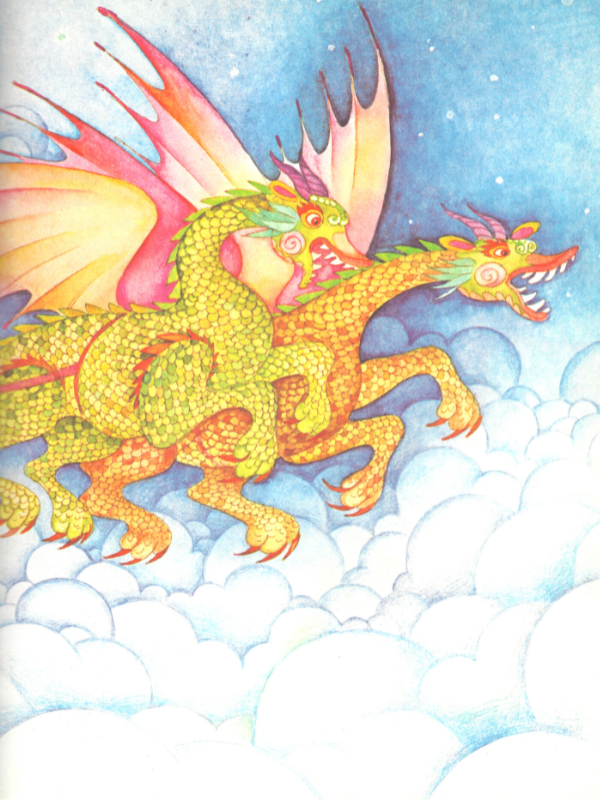
Fairy Tale Myth and Fantasy Books
Why choose our Vintage Fairytale, Myth and Fantasy books? Old Fairy Tale...
-
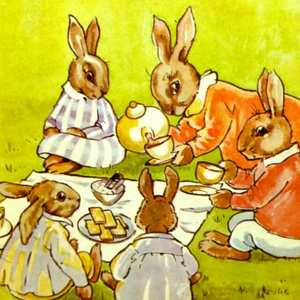
Vintage Children's Books
Why buy "Vintage Children's books" from Kittys Tales? We stock all sorts...
-
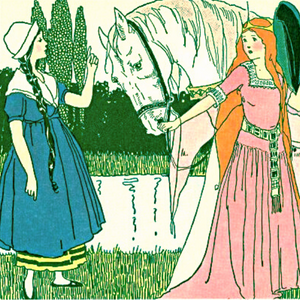
Illustrated Classics
Children love illustrated books each exciting page fuels their imagination and enriches...
